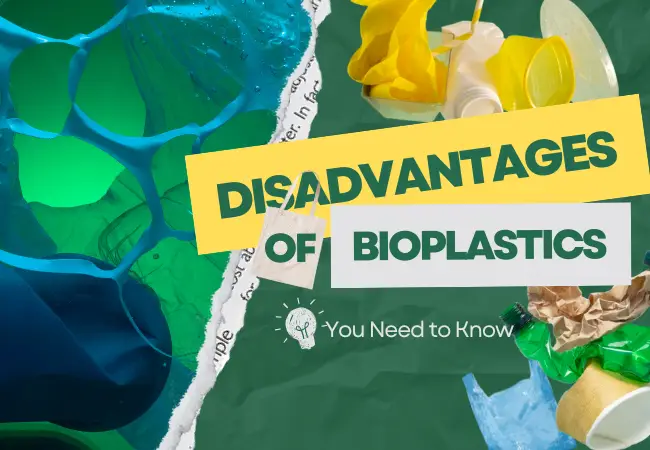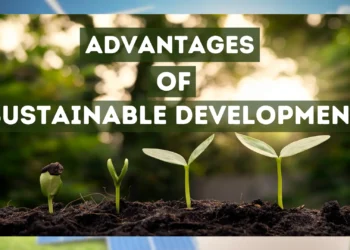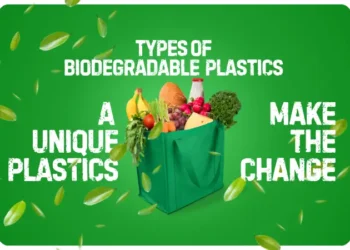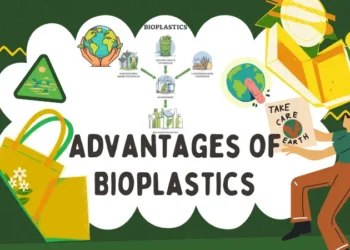Sustainable development might sound like a big idea, but it's actually easy to understand. It…

7 Essential Facts About the Disadvantages of Bioplastics You Need to Know
Bioplastics are often considered an eco-friendly solution to the growing plastic pollution problem. Generally, it is made from natural materials like corn, sugarcane, or potato starch; bioplastics are different from regular plastics made from petroleum. Many people think bioplastics are better for the environment because they come from renewable resources and are often labelled as biodegradable. But are bioplastics as green as they seem?
While bioplastics may have some benefits, they also have serious drawbacks that are important to understand. In fact, the disadvantages of bioplastics can be just as concerning as those of traditional plastics or even worse in some cases. For example, bioplastics can cause harm to the environment during production, use up valuable resources like land and water, and sometimes fail to break down properly in nature. These problems show that bioplastics are not the perfect solution they are often made out to be.
One major issue with bioplastics is the need for more clarity around their biodegradability. Many believe all bioplastics will naturally decompose in the environment, but this is untrue. Some bioplastics only break down under specific conditions, like in industrial composting facilities, which are only available in some places. Misunderstanding leads to the improper disposal of bioplastics, which can cause more pollution instead of less. This is just one example of the disadvantages of bioplastics that we will explore in this article.
Another area for improvement with bioplastics is how they are made. Growing crops like corn and sugarcane for bioplastics requires a lot of land, water, and energy. If farmland is used to grow crops for bioplastics instead of food, this can lead to deforestation, habitat destruction, and even food shortages. These environmental and social impacts are some of the most concerning disadvantages of bioplastics, and they show why it’s essential to look beyond the “green” labels.
Another challenge is the cost of producing bioplastics. Bioplastics are often more expensive than regular plastics, making them less accessible for everyday use. This economic challenge is another reason bioplastics have not replaced traditional plastics in most industries.
In this article, we will look at seven important facts about the disadvantages of bioplastics to help us understand how they affect our world. By understanding these problems, we can make better choices about using plastics and taking care of our planet. It’s important to look at both the good and bad sides of bioplastics before deciding if they are truly better than regular plastics. Let’s explore these seven important facts to find out why bioplastics might not be as environmentally friendly as they seem.
Seven Essential Facts About the Disadvantages of Bioplastics
- Environmental Concerns with Bioplastic Production: Bioplastics may come from plants, but their production can harm the environment. Growing crops like corn or sugarcane for bioplastics requires large amounts of land, water, and energy. This can lead to deforestation, loss of animal habitats, and more carbon emissions. For example, when forests are cleared to make space for growing crops used in bioplastics, carbon dioxide is released into the air, which makes climate change worse. Also, farmers often use chemical fertilizers and pesticides on these crops. These chemicals can wash into nearby rivers, polluting the water and harming fish and other animals. Although bioplastics are made from renewable materials, their production process is only sometimes environmentally friendly.
- Limited Decomposition in Natural Settings: Many believe bioplastics break down quickly and disappear naturally, but this is not always true. Some bioplastics only break down in special industrial composting facilities where the temperature and conditions are carefully controlled. If thrown away in regular trash or left in nature, they might stay there for years, just like regular plastics. For example, polylactic acid (PLA), a common type of bioplastic, needs high temperatures to decompose. If it ends up in a landfill, it may not break down properly and will contribute to waste, just like petroleum-based plastics. This shows how the disadvantages of bioplastics can sometimes outweigh their benefits.
- Resource Intensive: Land and Water Use: Producing bioplastics requires large amounts of resources. Crops like corn and sugarcane need fertile land and water to grow. This can put pressure on water supplies and take away farmland that could be used to grow food for people. For instance, a study showed that using corn to make bioplastics requires 2.5 times more water than producing regular plastic. In areas where water is already scarce, this can make problems worse. Moreover, if farmers switch from growing food to growing crops for bioplastics, it could lead to food shortages and higher prices. This is one of the most serious disadvantages of bioplastics because it directly affects both people and the planet.
- Potential for Toxicity in Breakdown Products: When bioplastics break down, they can release harmful chemicals into the environment. Some bioplastics are mixed with additives to make them stronger or more flexible, and these additives can be toxic. For example, phthalates and heavy metals are sometimes used in bioplastics, and they can leach into the soil and water as the plastic breaks down. This can hurt plants, animals, and even people. For example, scientists discovered that some bioplastics let out harmful chemicals that were poisonous to fish when they were in water. This makes people wonder if bioplastics are really safe for the environment.
- Economic Challenges: Cost of Bioplastics: Bioplastics are often more expensive to produce than regular plastics. This is because the raw materials and manufacturing processes cost more. For example, growing crops for bioplastics involves farming, harvesting, and transporting, all of which require money and energy. In contrast, traditional plastics are made from petroleum, which is cheaper and easier to process on a large scale. The higher cost of bioplastics makes them less appealing to companies and consumers. For instance, if a biodegradable cup made of bioplastic costs twice as much as a regular plastic cup, many people will choose the cheaper option. This economic challenge is one of the significant disadvantages of bioplastics, as it limits their use in everyday products.
- Recycling Issues: Contamination Risks Explained: Bioplastics are only sometimes easy to recycle. Mixing bioplastics with traditional plastics in the recycling process can cause contamination. This happens because bioplastics and regular plastics often require different recycling methods. If bioplastics end up in the wrong recycling bin, they can spoil a batch of recyclable materials. For example, PLA, a common bioplastic, cannot be recycled with PET, a type of traditional plastic used in water bottles. Suppose PLA bottles are mistakenly added to PET recycling streams. In that case, they can lower the quality of the recycled material, making it useless. This is a big problem because it makes recycling less effective and increases waste.
- Misleading Perceptions of Biodegradability Claims: Many companies market bioplastics as biodegradable, but these claims can be misleading. Just because a bioplastic is labelled “biodegradable,” it does not mean it will break down quickly or entirely in all environments. Some products only degrade under specific conditions, such as in industrial composting facilities, which are unavailable in many places. This needs to be clarified for consumers, who may think they are helping the environment by choosing bioplastics. For example, if someone throws a “biodegradable” bag into the woods, it may not decompose as they expect. Instead, it could stay there for years, polluting the area. This false sense of security is one of bioplastics’ most frustrating disadvantages, as it can lead to more waste and environmental harm instead of less.
Conclusion: Essential facts about the disadvantages of bioplastics
Bioplastics might seem like a good way to fix plastic pollution, but they have a lot of problems. These include hurting the environment, using up resources, being hard to recycle, and making claims that can be misleading. It’s important to know about these problems before deciding to use bioplastics instead of regular plastics.
Instead of just depending on bioplastics, we should try to use less plastic overall, make recycling better, and find other eco-friendly options. By understanding the disadvantages of bioplastics, we can make smarter choices to help the environment and protect the planet for future generations.




Comments (0)